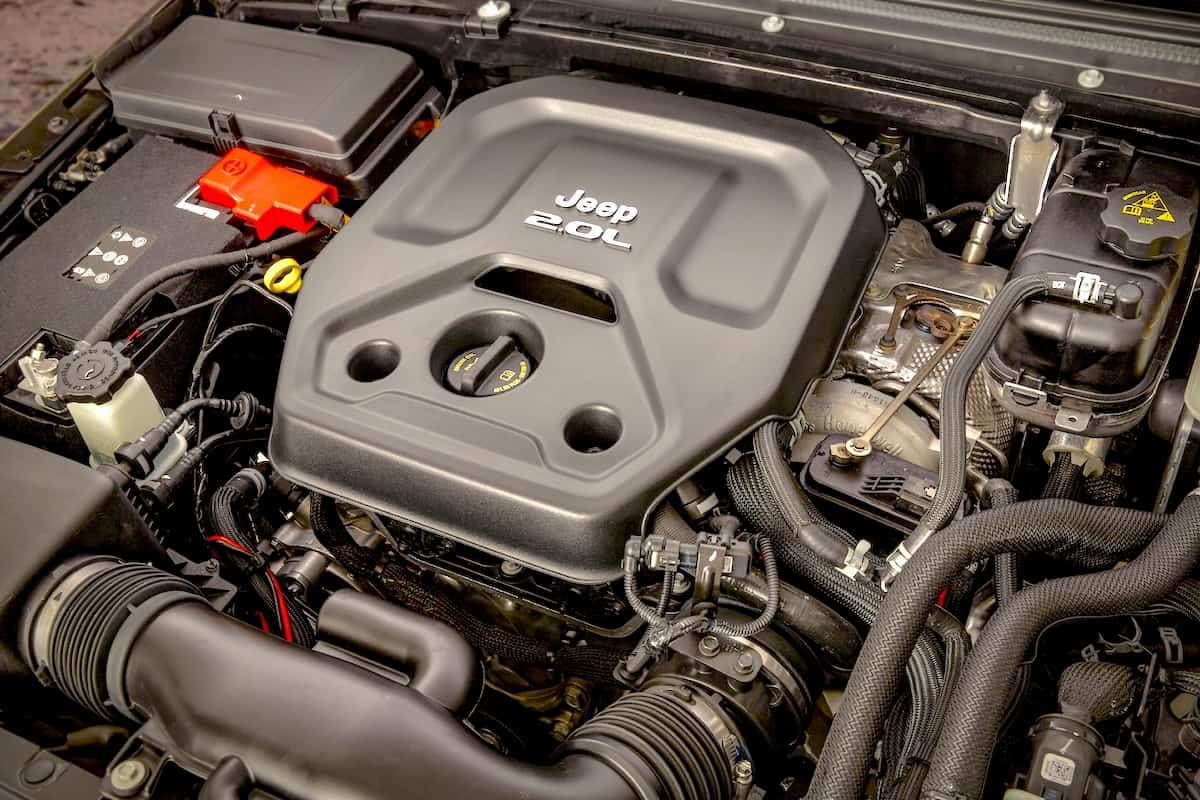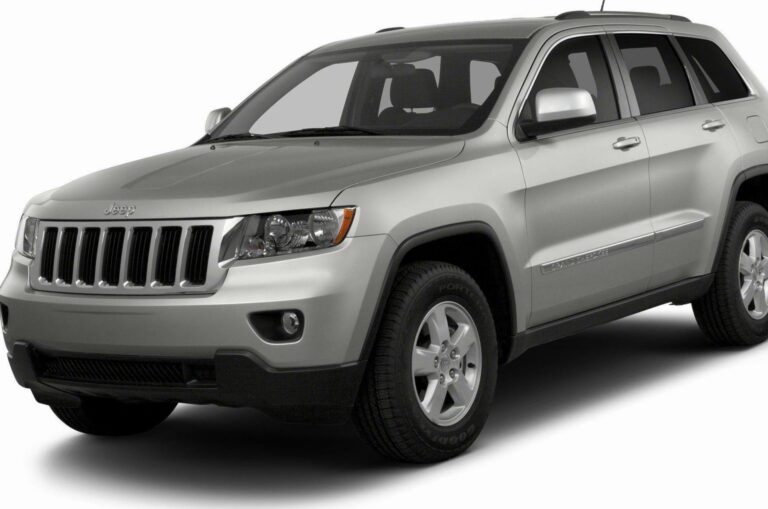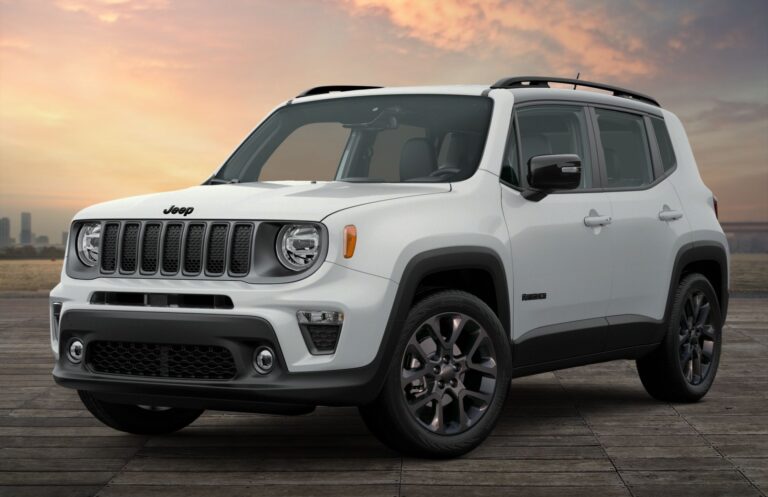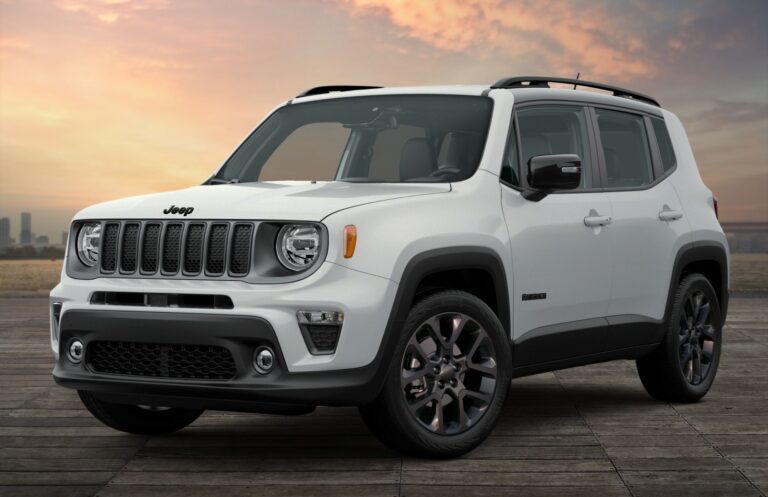Wrangler Jeep Engine Size: The Heartbeat of Off-Road Dominance
Wrangler Jeep Engine Size: The Heartbeat of Off-Road Dominance jeeps.truckstrend.com
The Jeep Wrangler is more than just a vehicle; it’s an icon, a symbol of freedom, adventure, and unparalleled off-road capability. At the core of every Wrangler’s legendary performance lies its engine – the beating heart that dictates everything from its horsepower and torque to its fuel efficiency and towing prowess. Understanding "Wrangler Jeep Engine Size" is not merely about displacement figures; it’s about comprehending the diverse powerplants that have shaped its legacy and continue to define its future. Choosing the right engine is perhaps the most crucial decision for any prospective Wrangler owner, as it directly impacts the driving experience, the vehicle’s suitability for specific tasks, and its overall character. This comprehensive guide will delve into the evolution, characteristics, and considerations surrounding the various engine sizes that have powered and continue to power the venerable Jeep Wrangler.
Understanding the Evolution: A Historical Perspective of Wrangler Engines
Wrangler Jeep Engine Size: The Heartbeat of Off-Road Dominance
The Jeep Wrangler’s journey through different generations (YJ, TJ, JK, and the current JL) has been marked by a fascinating evolution in its engine offerings. From robust inline-six powerhouses to modern turbocharged fours, potent V6s, efficient diesels, and groundbreaking plug-in hybrids, each engine has been carefully selected to meet the demands of the era and the evolving expectations of drivers. This progression reflects advancements in automotive technology, emissions regulations, and a constant pursuit of improved performance, efficiency, and versatility.
- YJ Generation (1987-1995): The first official "Wrangler" inherited its engines from its CJ predecessors. Options included the venerable 2.5L AMC inline-four and the larger 4.2L AMC inline-six (carbureted, later replaced by the fuel-injected 4.0L AMC inline-six). These engines were known for their simplicity and durability.
- TJ Generation (1997-2006): The TJ continued with the reliable 2.5L inline-four, but the star of the show was the legendary 4.0L PowerTech inline-six. Renowned for its torque, longevity, and ease of maintenance, the 4.0L became synonymous with the Wrangler’s rugged capability, solidifying its place in off-road lore.
- JK Generation (2007-2018): With the introduction of the larger JK, Jeep initially offered the 3.8L EGH V6 engine, a minivan-derived powerplant that, while adequate, often drew criticism for its lack of power and refinement compared to the beloved 4.0L. Recognizing the need for improvement, Jeep introduced the game-changing 3.6L Pentastar V6 in 2012, which instantly transformed the JK’s on-road manners and off-road performance.
- JL Generation (2018-Present): The current JL Wrangler boasts the most diverse and technologically advanced engine lineup to date, offering a range of options designed to cater to every possible need, from fuel efficiency to raw power.
Key Engine Offerings in the Modern Wrangler (JL Generation)

The JL Wrangler has truly broadened the spectrum of engine choices, allowing buyers to fine-tune their vehicle to their specific priorities.
-
3.6L Pentastar V6 (Standard):
- Displacement: 3.6 Liters
- Horsepower: 285 HP
- Torque: 260 lb-ft
- Key Features: This naturally aspirated V6 is the workhorse of the Wrangler lineup. It offers a balanced blend of power and efficiency, proving reliable and capable for both daily driving and moderate off-roading. Its smooth power delivery and familiar sound make it a popular choice, often paired with an 8-speed automatic or a 6-speed manual transmission. It also features Engine Stop-Start (ESS) for improved fuel economy.


-
2.0L Hurricane I4 Turbo (Optional):
- Displacement: 2.0 Liters
- Horsepower: 270 HP
- Torque: 295 lb-ft
- Key Features: This turbocharged inline-four offers surprising performance, particularly impressive low-end torque. It delivers its power quickly, making it feel sprightly, especially in city driving and technical off-roading where immediate power is beneficial. It generally offers slightly better fuel economy than the V6 and comes standard with an 8-speed automatic. It also utilizes mild-hybrid eTorque technology in some configurations.
-
3.0L EcoDiesel V6 (Discontinued for New Orders, but Relevant for Used Market):
- Displacement: 3.0 Liters
- Horsepower: 260 HP
- Torque: 442 lb-ft
- Key Features: The EcoDiesel was a torque monster, offering an incredible amount of pulling power, making it ideal for towing and crawling over challenging terrain. Its impressive fuel range was another significant advantage. While discontinued for new orders in late 2023, it remains a highly desirable option in the used market for those prioritizing torque and long-distance capability.
-
2.0L 4xe Plug-in Hybrid (PHEV):
- Displacement: 2.0 Liters (turbocharged) combined with electric motors
- Combined Horsepower: 375 HP
- Combined Torque: 470 lb-ft
- Key Features: The 4xe is a revolutionary addition, combining the 2.0L turbo engine with two electric motors and a 17 kWh battery pack. It offers significant power and torque, an impressive all-electric range (around 20-25 miles), and the ability to run in hybrid, electric-only, or eSave modes. It’s the most fuel-efficient Wrangler for short trips and provides instant electric torque for silent off-roading.
-
6.4L SRT HEMI V8 (Rubicon 392):
- Displacement: 6.4 Liters
- Horsepower: 470 HP
- Torque: 470 lb-ft
- Key Features: For those who crave ultimate performance, the Rubicon 392 is the answer. This powerful V8 transforms the Wrangler into a high-performance off-roader, capable of blistering acceleration and a thrilling exhaust note. It’s designed for maximum power and is ideal for desert running, high-speed trails, and making a bold statement, albeit at a significant premium in cost and fuel consumption.
Factors Influencing Engine Choice
Selecting the right Wrangler engine requires a careful assessment of your personal needs and driving habits.
-
Driving Habits & Primary Use Case:
- Daily Commuting & City Driving: The 2.0L Turbo or 3.6L V6 offer a good balance of power and efficiency for urban environments. The 4xe is excellent for short commutes if you can charge regularly.
- Off-Roading (Technical Crawling): The 4xe’s instant electric torque, EcoDiesel’s massive low-end torque, or the 2.0L Turbo’s punchy delivery are excellent. The 3.6L V6 is also highly capable.
- Off-Roading (High-Speed Desert): The Rubicon 392’s V8 is unmatched for power and speed in open terrain.
- Long-Distance Travel: The EcoDiesel (if you find one) offered great range. The 3.6L V6 and 2.0L Turbo are also perfectly adequate.
-
Performance Needs:
- Horsepower vs. Torque: Horsepower determines top-end speed and acceleration, while torque is crucial for pulling power, climbing steep grades, and getting off the line quickly. If you plan to tow or do serious rock crawling, higher torque figures are beneficial.
- Throttle Response: Turbocharged engines (2.0L, 4xe) often provide quick low-end torque, while naturally aspirated V6s have a more linear power delivery.
-
Fuel Efficiency:
- The 4xe offers the best overall fuel economy, especially if you utilize its electric range.
- The 2.0L Turbo generally outperforms the 3.6L V6 in MPG, particularly in city driving.
- The EcoDiesel offered impressive highway MPG and range.
- The Rubicon 392 has significantly lower fuel efficiency due to its large V8.
-
Towing Capacity:
- While Wranglers aren’t primarily towing vehicles, some engines offer better capacity. The EcoDiesel had the highest rating (up to 3,500 lbs), followed by the 3.6L V6 and 2.0L Turbo. The 4xe also offers good towing. Always check specific vehicle ratings.
-
Budget:
- The 3.6L V6 is typically the most affordable entry point.
- Optional engines like the 2.0L Turbo, 4xe, and especially the Rubicon 392, add significantly to the vehicle’s purchase price. Factor in not just the initial cost but also potential differences in fuel, insurance, and maintenance costs.
-
Environmental Concerns:
- The 4xe PHEV is the most environmentally conscious choice, offering zero-emission driving for shorter distances and reduced overall emissions.
Practical Advice for Choosing Your Wrangler Engine
- Assess Your True Needs: Be honest about how you’ll primarily use your Wrangler. Don’t pay for the 392’s power if you’ll only commute on paved roads, or overlook the 4xe’s efficiency if you have a short daily drive.
- Test Drive Multiple Options: This is paramount. The feel, sound, and throttle response of each engine are unique. Drive them on various terrains if possible to get a true sense of their capabilities.
- Consider Future Modifications: If you plan on installing larger tires or heavy aftermarket accessories, these will add weight and rolling resistance, effectively reducing perceived engine power. You might need an engine with more torque, or consider re-gearing your axles to compensate.
- Think About Resale Value: While all Wranglers hold their value well, certain engine options might be more desirable in the used market depending on demand.
- Don’t Overlook Transmission: The automatic 8-speed transmission is highly regarded across all engine options, offering smooth shifts and optimizing power delivery. The 6-speed manual is only available with the 3.6L V6 for those who prefer more engagement.
Conclusion: Finding Your Perfect Powertrain Match
The engine is undeniably the heart of the Jeep Wrangler, defining its character and capabilities. From the rugged simplicity of past generations to the sophisticated and diverse powertrains of today’s JL, Jeep has continuously evolved its engine offerings to meet the dynamic demands of its loyal fanbase. Whether you prioritize balanced performance, fuel efficiency, extreme torque for crawling, or raw V8 power, there’s a Wrangler engine size designed for you. By carefully considering your driving habits, performance needs, and budget, you can confidently select the perfect powerplant to embark on your next adventure, ensuring your Wrangler is truly built for the journey ahead.
Wrangler Jeep Engine Options and Estimated Starting MSRP
Below is a table summarizing the key engine options available in the modern (JL) Jeep Wrangler, along with their general characteristics and estimated starting MSRP for a new vehicle equipped with that engine.
| Engine Type | Displacement | Horsepower (HP) | Torque (lb-ft) | Key Features / Notes | Typical Model Years | Estimated Starting MSRP (New Wrangler) * |
|---|---|---|---|---|---|---|
| 3.6L Pentastar V6 | 3.6L | 285 | 260 | Standard, reliable, balanced performance. | 2012-Present (JK/JL) | $32,000 – $40,000+ |
| 2.0L Hurricane I4 Turbo | 2.0L | 270 | 295 | Good low-end torque, better fuel economy. | 2018-Present (JL) | $34,000 – $42,000+ |
| 3.0L EcoDiesel V6 | 3.0L | 260 | 442 | High torque, excellent towing, fuel efficient. (Discontinued for new orders) | 2020-2023 (JL) | $45,000 – $55,000+ (when available) |
| 2.0L 4xe PHEV | 2.0L | 375 (combined) | 470 (combined) | Plug-in hybrid, electric range, powerful, efficient. | 2021-Present (JL) | $50,000 – $65,000+ |
| 6.4L SRT HEMI V8 (Rubicon 392) | 6.4L | 470 | 470 | High performance, ultimate power, aggressive sound. | 2021-Present (JL) | $80,000+ |
Note: Prices are approximate starting MSRPs for a new Wrangler equipped with that engine and can vary significantly based on trim level, options, location, and dealer markups. Used vehicle prices will differ. Always check the latest pricing and availability from official sources.
Frequently Asked Questions (FAQ) about Wrangler Jeep Engine Size
Q1: Which Wrangler engine is best for daily driving?
A1: For a balanced daily driver, the 3.6L Pentastar V6 or the 2.0L Hurricane I4 Turbo are excellent choices. The 2.0L Turbo offers better low-end torque and slightly better fuel economy, while the V6 is a proven, smooth performer. The 4xe is ideal if you have a short commute and can charge regularly.
Q2: Which Wrangler engine is best for serious off-roading, like rock crawling?
A2: For technical off-roading and rock crawling, engines with high low-end torque are preferred. The 4xe’s instant electric torque is phenomenal, and the discontinued 3.0L EcoDiesel (if found used) offers massive torque. The 2.0L Turbo’s strong low-end also makes it a great choice. The 3.6L V6 is still highly capable, especially with proper gearing.
Q3: Which Wrangler engine offers the best fuel economy?
A3: The 2.0L 4xe Plug-in Hybrid is the most fuel-efficient, especially if you utilize its electric-only range. After that, the 2.0L Hurricane I4 Turbo generally offers better MPG than the 3.6L V6, particularly in city driving. The 3.0L EcoDiesel (when available) offered impressive highway range.
Q4: Can I swap engines in my Wrangler?
A4: Yes, engine swaps are possible, especially for older TJ and JK models (e.g., swapping a HEMI V8 into a JK). However, they are complex, expensive, and often require significant modifications to the drivetrain, electronics, and suspension. It’s usually undertaken by experienced enthusiasts or specialized shops.
Q5: What’s the main difference between the 3.6L V6 and the 2.0L Turbo?
A5: The 3.6L V6 is naturally aspirated, offering linear power delivery and a traditional V6 feel. The 2.0L Turbo is a turbocharged four-cylinder that delivers more torque at lower RPMs, making it feel more responsive off the line and often yielding better city fuel economy. The V6 might be preferred for its sound and simplicity by some, while the 2.0L is chosen for its punchiness and efficiency.
Q6: Is the EcoDiesel worth it, even if it’s discontinued?
A6: For those who prioritize maximum torque for towing or long-distance off-roading with fewer fuel stops, the EcoDiesel was an excellent choice. Its discontinuation means you’ll need to look at the used market. Factor in the higher initial cost of diesel models and potentially higher maintenance costs, but acknowledge its unique benefits.
Q7: What is the 4xe engine, and how does it work?
A7: The 4xe is a plug-in hybrid electric vehicle (PHEV) system. It combines the 2.0L Hurricane I4 Turbo engine with two electric motors and a high-voltage battery pack. It can run on pure electric power for a significant range (around 20-25 miles), switch to hybrid mode, or use the gas engine to save battery charge for later. It offers strong combined horsepower and torque, making it very powerful and efficient.
![]()




